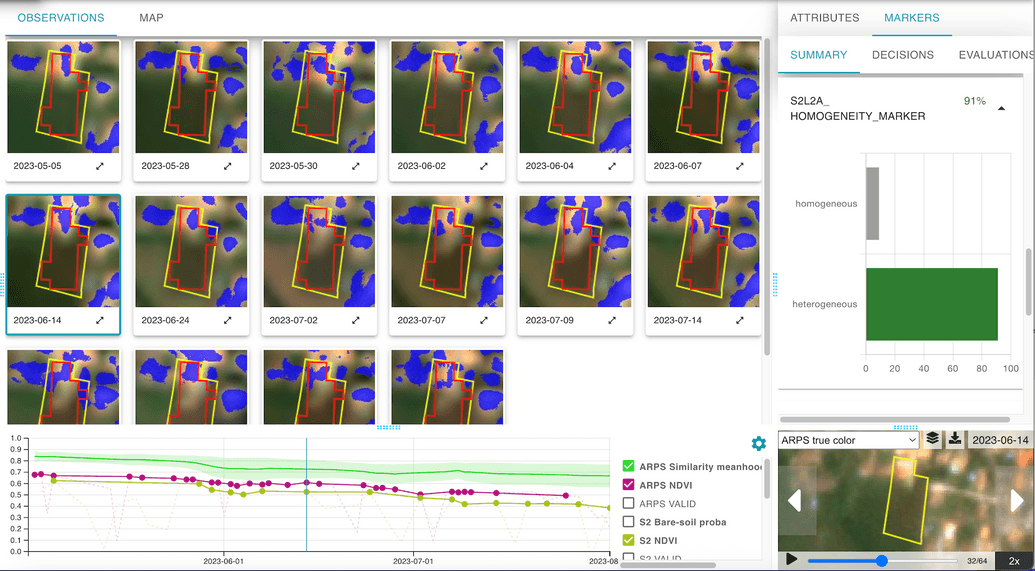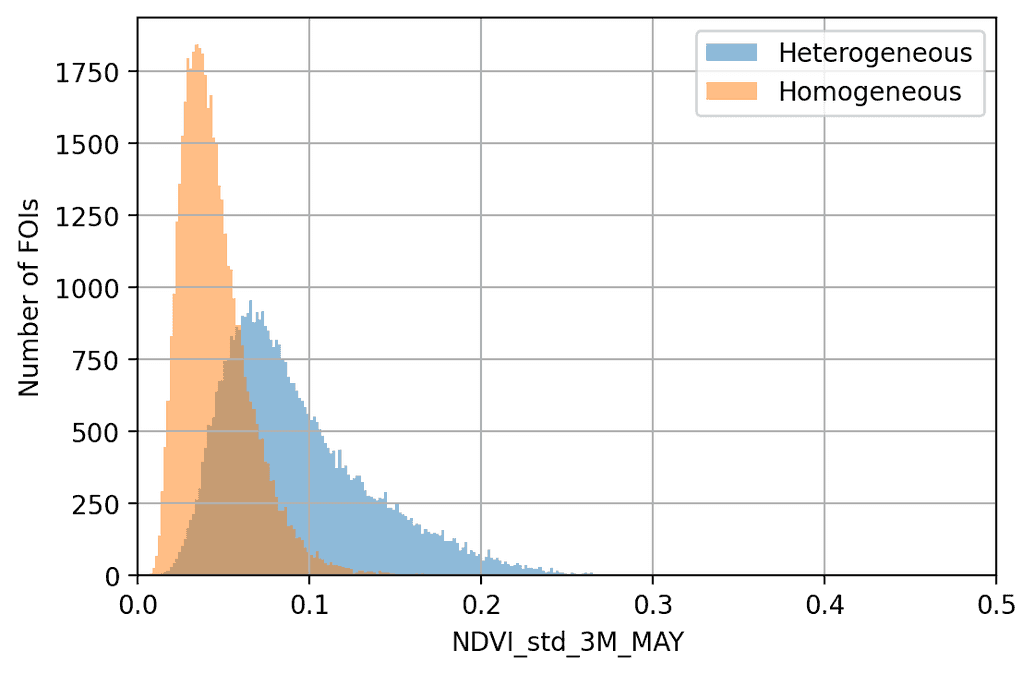Homogeneity Marker
Basic info
The homogeneity marker serves to identify fields (FOIs) on which several crops are being grown. It identifies heterogeneities on the scale of the FOIs declared primary crop's season and is not applicable to individual observations. That is the case, because a FOI could be heterogeneous in individual observations for many reasons. Some of the most common short-period heterogeneities are the consequences of:
- farming practices like partial mowing, which is especially common on large meadows.
- intrinsic properties of the field, like intra-FOI differences of soil quality, moisture or many others. Fast-growing crops are especially susceptible to such heterogeneities.
To eliminate the influence of such short-term heterogeneities, we evaluate heterogeneity of a FOI on a season time-frame by aggregating relevant signals into season-spanning features.
Marker output
The most relevant signals include:
Statistical measures:
- Standard deviations and percentiles over the FOI's pixels for various signals (bands like B02, B03, or indices such as NDVI and NBSI)
Land-cover classifiers:
- We have developed land-cover classifiers that can determine the ratio of a FOI's pixels belonging to a certain land-cover type for each observation
- Examples include bare-soil (left) and built-up pixel masks (right)
- Red-colored pixels represent bare-soil and blue-colored pixels represent built-up land cover
- For some types of heterogeneities, FOIs are expected to have pixels that are consistently different in terms of their predicted land-cover class
| FOI = 92276534 | FOI = 92287687 |
|---|---|

|

|
Further info
The signals like the one listed above are aggregated into multi-month features for each signal inside a desired time-frame. For Slovenia, the most important averaging time-frame that has been identified is the 3-month averaging interval from 1st of May to 1st of August, since it coincides with the growing season of most crops. Below we show the distribution of NDVI_std_3M_MAY, which represents the feature we get by performing a three-month average of the NDVI_std from 1st of May to 1st of August. FOIs that are known to be homogeneous or heterogeneous are shown in orange and blue respectively.
Clearly, heterogeneous FOIs have higher NDVI_std_3M_MAY (similar for other features), which allows us to distinguish between homogeneous and heterogeneous FOIs. The homogeneity marker uses many such engineered features to assign a probability of a FOI being homogeneous. If the probability is larger than 35 (on a scale of 0-100) we classify the FOI as homogeneous, while for probabilities lower than 35 a heterogeneous classification is assigned.
